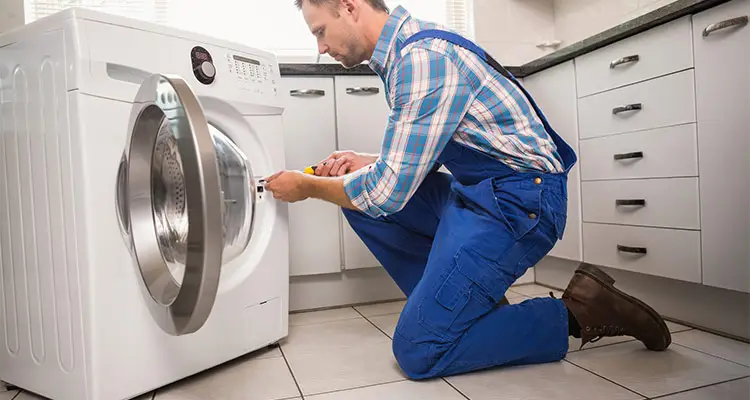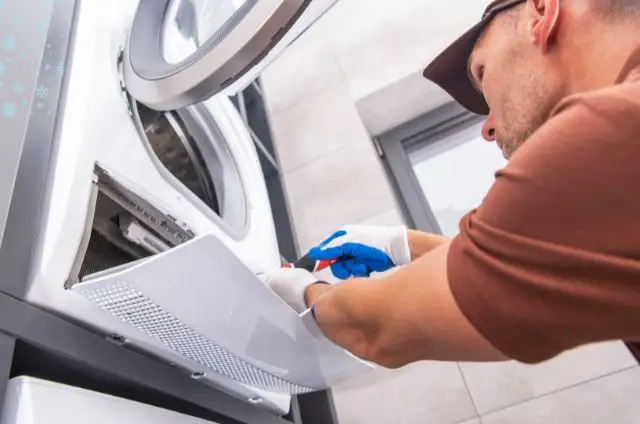Laundry days are streamlined by the convenience of our trusty dryers, making them an integral part of household appliances. However, like any mechanical companion, dryers are not immune to malfunctions that can disrupt their efficiency. This guide aims to empower you with the knowledge to identify and troubleshoot common issues, ensuring your dryer operates at its best and lasts longer. Below, we bring you a comprehensive guide to diagnose issues in adryer:
Preliminary Visual Inspection for Diagnosing Issues in a Dryer
Before diving into the technical realm, initiate your diagnostic journey with a thorough visual inspection. Examine your dryer for any visible signs of wear, damage, or loose components. Often, this initial scrutiny reveals straightforward problems, such as foreign objects lodged in the drum or visibly damaged parts. Addressing these issues early can potentially save you time and money by avoiding more complex repairs down the line.
Verification of Electrical Connections
Just as the heart powers the body, electricity is the lifeblood of your dryer. Ensure all electrical connections are not only securely fastened but also free from any signs of wear or damage. Faulty wiring can manifest in erratic dryer behavior or, in more severe cases, pose safety risks. By regularly checking and maintaining the electrical components, you contribute to the overall well-being of your dryer.
Issues with the Thermostat
Imagine your thermostat as the conductor of a symphony, regulating the temperature for optimal performance. If your dryer experiences irregular temperature fluctuations, it could be a sign of a failing thermostat. Employ a multimeter to check for continuity, and if the readings are inconsistent, it may be time for a thermostat replacement. This small yet crucial component can significantly impact your dryer’s ability to achieve the right level of heat for efficient drying.
Lint Filter Inspection
The lint filter, often overlooked, plays a pivotal role in your dryer’s efficiency and safety. A clogged lint filter restricts airflow, leading to longer drying times and potential overheating. Cultivate a habit of regularly cleaning the lint filter after each load and inspecting the air outlet for obstructions. This simple practice not only enhances your dryer’s efficiency but also minimizes the risk of lint-induced fires, ensuring a safer laundry experience.
Heating Element Check
The heating element is the unsung hero behind warm, dry clothes. If your garments are persistently damp, the heating element might be losing its vigor. Utilize a multimeter to measure resistance, and if the values deviate from the norm, consider a replacement. A well-functioning heating element is crucial for achieving the desired temperature, ensuring your clothes come out perfectly dried.
Drum Issues Observation
Unusual noises or resistance when manually turning the drum can signal underlying mechanical concerns. Dive into the inner workings of your dryer by inspecting bearings, pulleys, and the belt. Worn-out components can escalate into major issues, potentially causing irreparable damage. Timely replacement of these parts is akin to preventive medicine, safeguarding your dryer against more significant malfunctions.
Ventilation Problems
For your dryer to perform optimally, it needs to breathe. Check for obstructions in the ventilation duct, ensuring it efficiently vents to the outside. Proper ventilation not only contributes to efficient drying but also prevents the buildup of heat, reducing the risk of overheating and potential damage to your appliance.
Moisture Sensor Consideration
Moisture sensors act as the discerning eyes of your dryer, ensuring clothes are neither under-dried nor over-dried. Regular cleaning is essential to prevent inaccurate readings that can lead to suboptimal drying. If issues persist despite regular maintenance, it might be time to consider replacing these critical components to restore precision to your drying cycles.
Airflow Issues Evaluation
Imagine airflow as the life force circulating within your dryer. Problems in this department can significantly impact drying time and overall efficiency. Regularly check the exhaust duct for blockages and monitor air pressure to guarantee consistent airflow. Adequate ventilation is the secret ingredient for achieving the best performance from your dryer.
Motor and Belt Inspection
Your dryer’s motor and belt are the unsung heroes, tirelessly working to ensure the drum turns and your clothes dry evenly. Conduct a visual inspection of these components, checking for signs of wear and tear. A worn-out belt or a malfunctioning motor can disrupt the entire operation, making timely replacement crucial for sustained functionality.
Preventive Maintenance
To ward off future problems, establish a routine maintenance schedule. Regularly clean the ventilation duct, lint filter, and conduct periodic visual inspections. This proactive approach is the key to ensuring your dryer remains in top-notch condition, sparing you from unexpected breakdowns and costly repairs.
Tips for Proper Dryer Usage
- Avoid Overloading: Resist the temptation to overload your dryer, allowing proper airflow and ensuring efficient drying for each load.
- Lint Filter Maintenance: Make it a habit to clean the lint filter after each load, promoting optimal performance and reducing the risk of lint-related issues.
- Drying Cycle Selection: Choose the appropriate drying cycles for different types of clothing to prevent damage and ensure your garments receive the care they deserve.
- Leveling for Stability: Ensure your dryer is leveled to prevent excessive vibrations during operation, contributing to a quieter and more stable laundry routine.
- Consult the User Manual: Refer to your dryer’s user manual for specific maintenance instructions tailored to your model, providing valuable insights for optimal care.
Common Solutions for Frequent Problems
- Unusual Noises: Address and adjust bearings and pulleys to eliminate unusual sounds, ensuring a smoother and quieter operation.
- Damp Clothing: Inspect and, if necessary, replace the heating element to restore proper drying and prevent the inconvenience of consistently damp clothes.
- Lack of Heat: Regularly check and ensure the thermostat is functioning correctly to maintain consistent and efficient heat levels.
- Slow Drying: Regularly clean the ventilation duct to ensure unrestricted airflow, contributing to shorter drying times and improved efficiency.
- Drum Not Turning: Examine the belt and motor for signs of wear, and promptly replace any worn-out components to prevent further damage and ensure a functional drum.
Diagnosing and addressing issues in your dryer is not only a matter of convenience but also a crucial step in prolonging its functionality. Embrace regular maintenance practices, promptly address visible and potential concerns, and adhere to proper usage tips. By doing so, you not only ensure your dryer operates efficiently but also contribute to its long and dependable service in your household.
Ready to ensure your dryer’s top-notch performance? Visit our laundry repair services page now for expert assistance and keep your appliance running smoothly!







